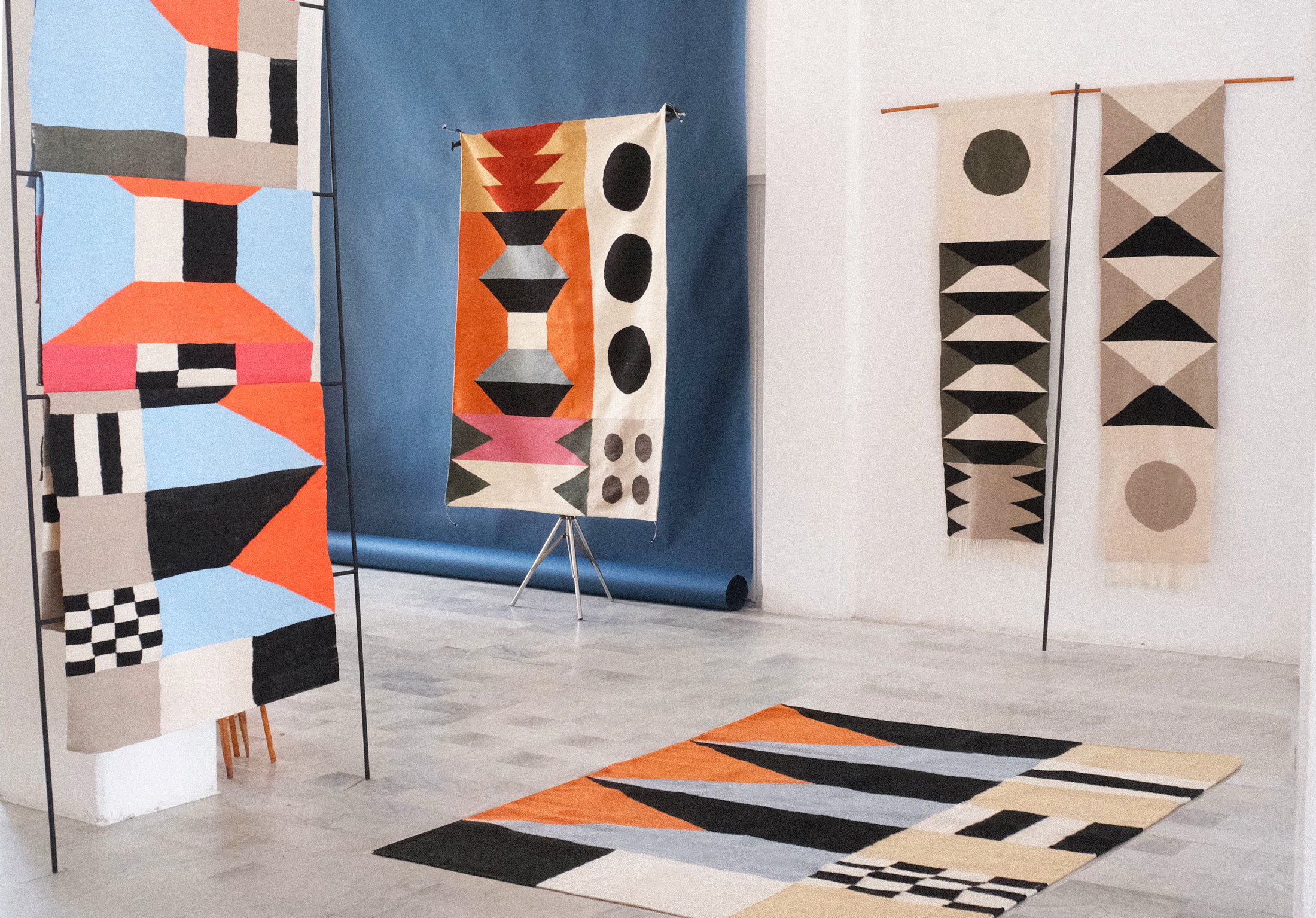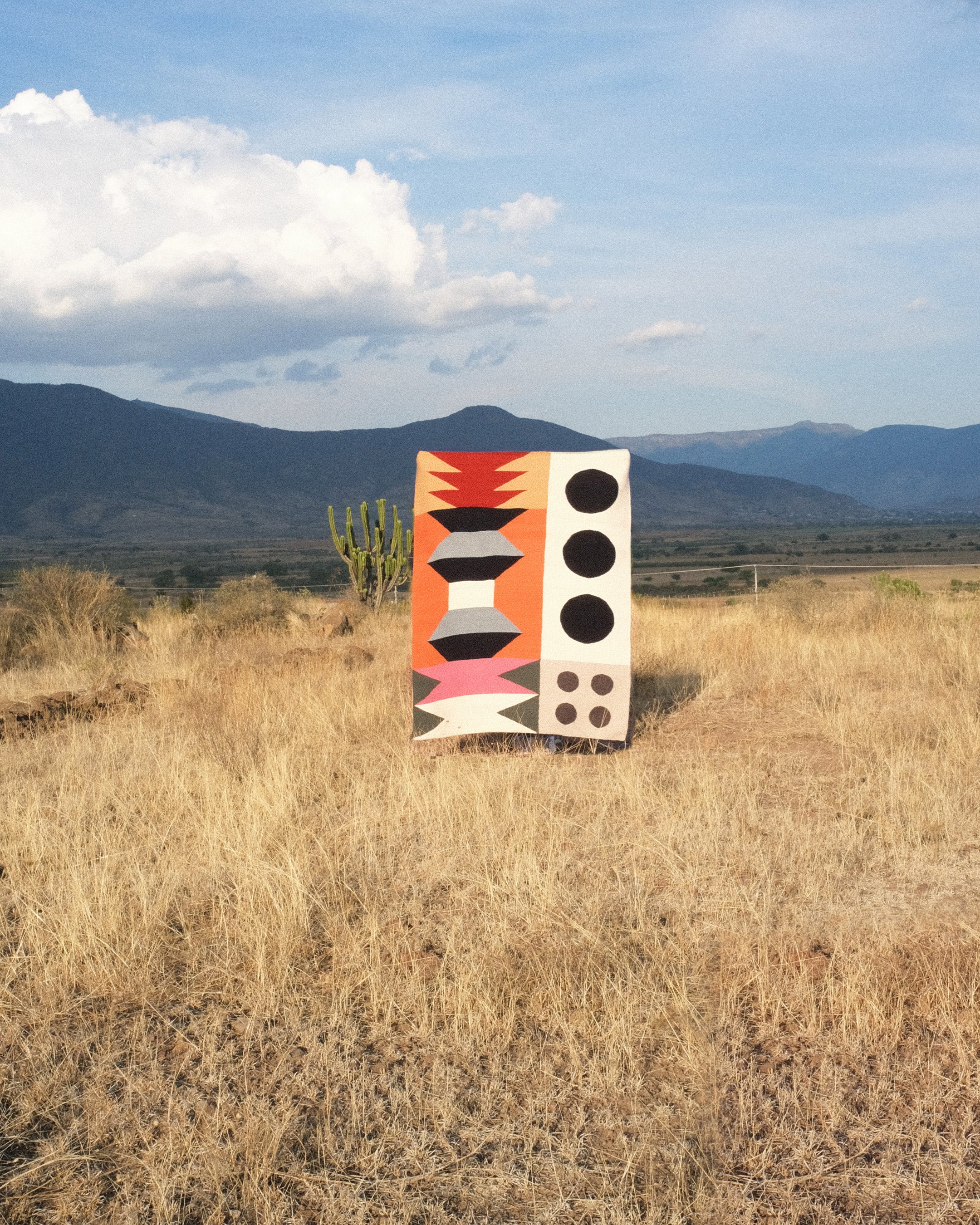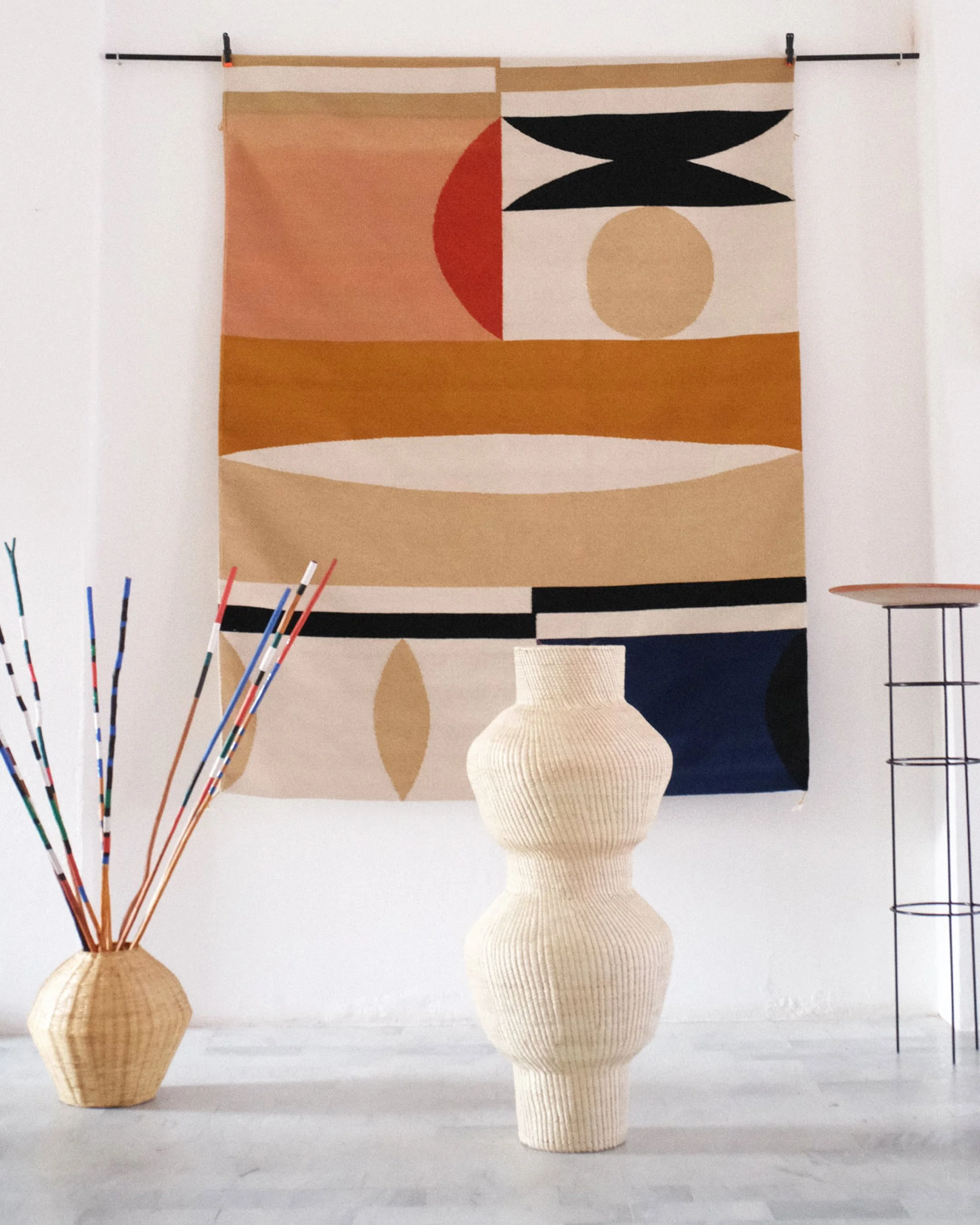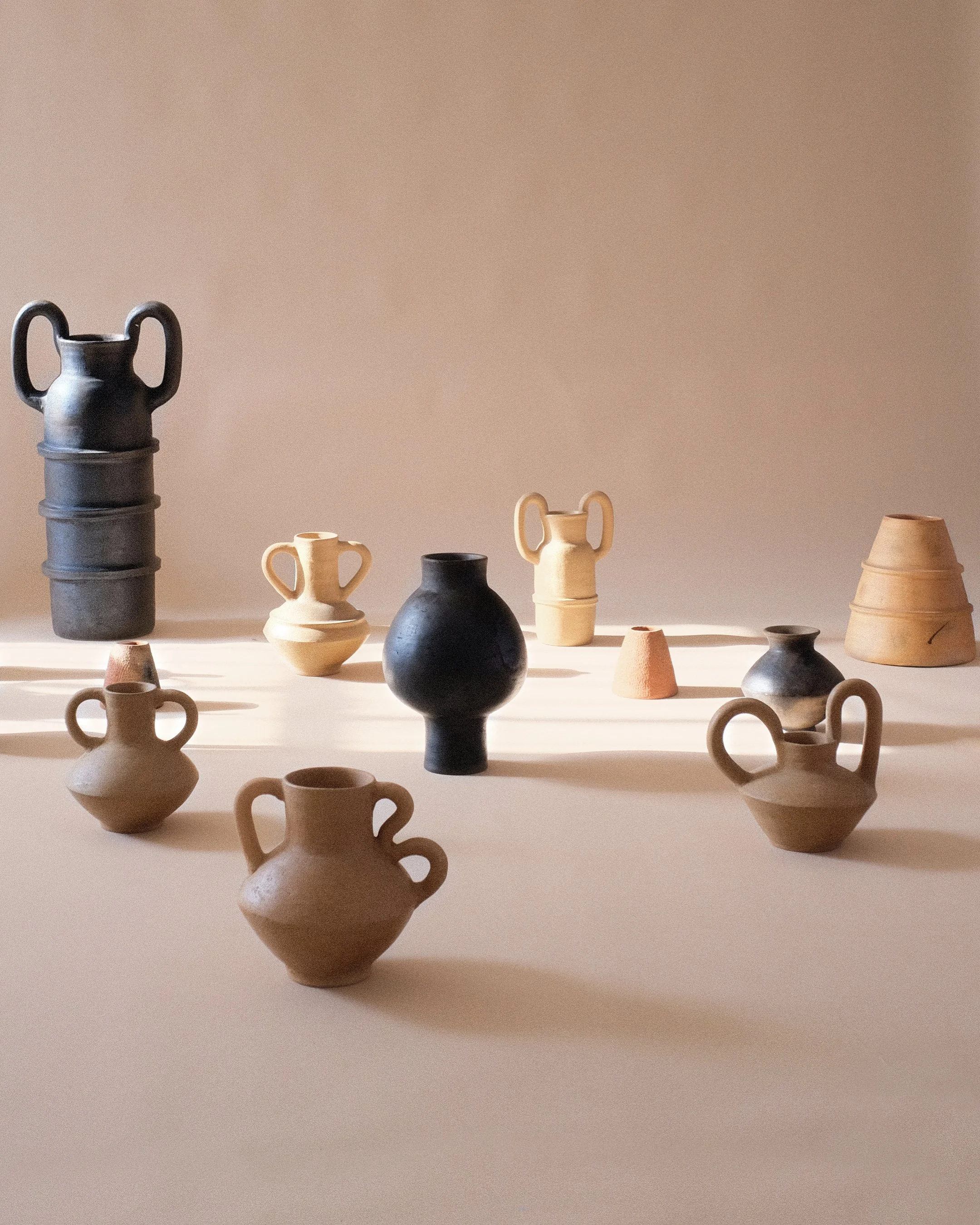Rrres Studio
Started by Javier Reyes, a graphic designer originally from the Dominican Republic, rrres Studio develops textile products heavily inspired by place and minimalist design. In this edition of Cultivating Conversations, we sat down with Javier to discuss his journey as an artist and founder, the inspiration behind it, and the trials and tribulations of building a studio from the ground up, while working with artisans and craftspeople in the Oaxaca, Mexico region.
TELL US ABOUT YOURSELF AND THE STUDIO.
I’m a Dominican designer from the Dominican Republic, which I think is very important to address with this whole project. I was doing commercial design for many years, and then decided to start this more meaningful work with people, especially artists in Latin America.
“I wanted to have an organic process and do work that represents more of the culture that we have.”
I became very interested in working with traditional crafting techniques and with people, in collaboration. My work is not just design, but also has a lot of photography and videos – everything is connected.
I got to Mexico around five or six years ago. I arrived there with the idea for this project, but had no idea of where to go or any information. One thing after the other led me to Oaxaca, where I'm based currently. It was a little bit of connecting dots and not necessarily planning too much.
HOW DID YOU CHOOSE OAXACA?
I was doing some research and going to museums in Mexico City where I was staying at the time and things were just pointing in that direction. I wanted to work in a place where I could be close to the artisans, so I was looking for a place that still had a lot of these techniques alive, but not too spread out. Because again, I didn't know what I wanted to create. It was more just: “Let's get to the place, contact people, see what happens.” Because there was a lot of trial and error, months and months of not necessarily understanding what the direction was. So I needed a place that was practical.
“The culture itself, how everything is still very alive. It's what drove me there.”
WHAT INSPIRES YOUR ARTISTIC STYLE? AND, HOW DO YOU TRANSLATE THOSE INFLUENCES INTO YOUR WORK?
For me at the beginning I was not that connected with the idea of my identity in my work, and what my place is as a Latin American designer. I didn't have that need and wasn’t that connected with the idea.
“After living abroad, I realized the importance of merging identity and culture with Design and Art.
I started becoming more interested in arts and craftsmanship and Latin America, and how that translates to the history and context of these pieces and where these pieces are being made. I became obsessed with finding a new way of designing and making art in a way that is decolonized. Because for us, the reference for designing and aesthetics is always Europe. It's always outside. I became more aware of this and felt the need to observe more the context where I was living. Back when I started living in Oaxaca and Mexico, I started having moments of “My God, this is amazing.” There's a lot of material that is resonating with me because I grew up in the Dominican Republic. I see the similarities.
“So everything became inspiration: my daily routine, going to the markets, working with Zapotec artisans which is one of the indigenous cultures that flourished in Oaxaca.”
By understanding more of their culture and being aware of their history, why things are what they are – like why we have such a strong presence of Catholic religion in Latin America, and how does that influence everything in modern society – I started understanding why we have this need of using and expressing colors in daily lives. And architecture even, it's crazy what people can do in places where there are not so many rules, and what solutions people can come up with. There’s a lot of that, it really comes down to the context itself.
HOW DO YOU STAND OUT IN A COMPETITIVE MARKET? WHAT SETS YOUR STUDIO APART FROM OTHER ART DESIGN BRANDS?
That’s a good one. I can’t say exactly what I think it is, but one thing that people notice is this effort of trying to detach from the aesthetic standards and have more of a direct or clean narrative of someone from Latin America living there, working with people, building the project from scratch. I think because I'm able to design, photograph, make the videos, first by myself and now with my team, it's a direct link between the whole world of rrres and ideas. I was able to transmit it very clearly to people because I was not hiring people to do this.
“There was a strong connection with the whole process and the emotion behind it. So I think that's one of the things that spoke to people, the transparency and how we try to do things.”
You often see marketing like “We work with indigenous communities” or “We’re helping by working with them.” I became aware of how people perceive Latin America, or how sometimes people have an approach within Latin America of being like “Aw, we're helping them.” I wanted to try to take that out and just show people how it is, who the people are. It's not about helping; it’s something that is being built together with them. And if you know history, organizations like that aren’t helping. They're basically, if anything, balancing out the things that are totally unbalanced from colonization. When you ask me this I'm not 100% sure what it is. But I think just being 100%, true and honest with people, I think that resonates very well.
YOU'VE TALKED A LOT IN THE PAST ABOUT THE IMPORTANCE OF EXPERIMENTATION AND PUSHING ARTISTIC BOUNDARIES. CAN YOU EXPAND A LITTLE BIT ABOUT THIS PHILOSOPHY AND HIGHLIGHT YOUR PERSONAL CREATIVE PROCESS?
Yeah, I think it's really important. I saw the need for risk, but I have to be honest and say I don't take all the risk because we still rely on commercial ways of sustaining a project. But within what is possible, I felt the need for pushing boundaries. If I am just getting my references from the Internet, and every time I want to get inspired I'm looking at something that doesn't belong to me, then there’s not much substance behind it.
“It’s important to connect with what's happening in that moment of your life, and also where you’re coming from and who you are.”
I think those are the risks that you take. It's a struggle because it's also something that you're also doubting because it doesn't belong to the codes of aesthetics necessarily, or you're not sure people are going to like it because it's not something that you’ve seen before.
And that's the same as my process. My process involves a lot of observation. It's a lot of opening your eyes and seeing what's speaking to you in that moment.
“There's a lot of visual influence in Oaxaca. I always go back to the Dominican Republic to visit family, and there's a huge opportunity for me to compare both cultures and contexts.”
And that's really beautiful, the more emotional side of the process. But the other part of that, which is more technical, is how every time we're doing a new series, either rugs or ceramics, there's a lot of trial and error. I learned in this process that it's not what you want to do, it's what's available, what can be done. It's not about your ideas anymore, it's about the collaboration that takes place there. When you're presented with limitations, that can actually be a positive actually.
Just look at our rugs. They’re made in a pedal loom, but because of the nature of the material (the thread is very thin) you can’t freestyle so easily. So the nature of that technique, it's more geometrical. I was conditioned to come up with designs that were very different. Then, I started designing with this in mind and started seeing that I was creating structures with this geometrical nature and that reminded me directly of the architecture that is present here.
At the beginning, I was pushing my ideas and was not necessarily super receptive of what was happening and what the material was. Sometimes it's not about you necessarily but it's what you're doing with what you're working with and the materials, and I think it kind of dictates a lot.
ARE THERE ANY SPECIFIC TECHNIQUES OR MEDIUMS THAT YOU PREFER TO WORK WITH?
No, I mean, through the years, I've started appreciating all of them.
“Rugs are special because the technique has a lot of freedom. You can translate a lot of two dimensional designs into a rug easily.”
Maybe you struggle with getting the quality right, the colors, because it's all handmade, but overall, it can be translated fairly easily compared to, for example, the Palm Sculptures. It took us six months to get there. It was just constant trial and error. And we just came up with a new one. I was able to do that, because I learned how to adapt to the artisans. I don't prefer any technique over other ones; I find them all interesting because they present different challenges. I love the challenge. Sometimes, it can be too much. But most of the time, it's interesting to see where you got based on the technique and not based on a reference in the back of your mind.
YOU MENTIONED GIVING A LITTLE GUIDANCE TO SOME OF THE ARTISANS FOR SPECIFIC COLORWAYS. HOW DO YOU NAVIGATE THE TENSION BETWEEN CREATING ART FOR PERSONAL EXPRESSION VERSUS FOR COMMERCIAL PURPOSES?
“I try to come up with a way to reconcile these two worlds. I try to navigate between the commercial and noncommercial.”
Like in the last series, I know geometrical squares and shapes are not necessarily the best for sales. I went ahead and risked it because it made sense with what we were doing, it was related to architecture and things. There's a lot of things that happen sometimes that I'm not 100% aware of how to reconcile them. Sometimes I find ways of making the theme or the idea a little bit more abstract and find the meaning through other things, rather than through an aesthetic goal.
NOW THAT YOU’VE HAD THE STUDIO RUNNING FOR OVER FIVE YEARS AND BEGUN TO GAIN SOME RECOGNITION, HAS THAT INFLUENCED YOUR ARTISTIC JOURNEY?
I think that helped reassure a lot of things. I recognized that after a while, maybe I need to go back to risking more and it has become more similar. But it was confirming, reassuring. When I moved to Oaxaca, I left everything behind and it was a tough moment and I was like, I know I can do this. It’s not conventional to have people wait to get their pieces. So everything was a risk and when I received the recognition it felt really great. It was also nice to have good feedback from the US, and I really loved that. I was living in Europe for a moment and it's very different in many ways and special in commercial projects in terms of getting people to understand what you're doing.
“And I always loved that about the U.S. that it's like, I don't know you but I love what you're doing and I will get your piece.”
In Europe, it felt like you need to have a curriculum for where you’re coming from. it's just a whole different perception when it comes to arts.
WOULD YOU SAY THAT THE US IS YOUR BIGGEST MARKET IN TERMS OF NOT JUST PRESS, BUT ALSO CONSUMERS?
It's half and half. We work with a lot of interior designers in the U.S., but it's mostly online sales or more personal, and in Mexico, it's more like projects.
“We're doing a lot of orders for hotels, for stores or we are working more directly with interior designers that are working for private or commercial clients.”
So, it's half and half. It's also very different in terms of quantity; with a lot of interior designers in the U.S., it's orders of two or three pieces. In Mexico, it's 10 or 20.
HOW LONG WOULD IT TAKE YOU TO FILL AN ORDER FOR 10 PIECES?
We developed a solid team of weavers. And so 10 rugs, depending obviously on the size now. could take us just five to six weeks because we will assign each rug to a weaver.
“So we'll have at least 10 weavers working at the same time. So we can deliver very fast too. That's one of the things that I think stands from other projects that work with artisans and they have made to order processes.”
Because I'm there with the artists, we are able to organize a solid team that can respond very quickly.
HOW DOES THE STUDIO INCORPORATE SUSTAINABILITY INTO ITS PRACTICES?
We try to move the pieces as little as possible. We're at our base in Oaxaca, and we obviously have to ship things and it's difficult to find a different solution than shipping the traditional ways, but all the material we make sure we know where it's coming from. For example, wool is a material that can be tricky because there's a lot of wool that comes from businesses that do not have the most ethical ways of treating animals. We’ll make sure over time to get in contact with a provider we know. For wool, we have one guy with this very small team in Mexico. He buys the wool from local farmers and everything is done in a natural process. Nothing is mass produced or anything, and he processes the raw material, and he sells the wool to us. For cotton, we get material from a factory that does eco-yarn, which is a technique that recycles from different colors and to make the color that they sell. So it's a recyclable process. And for the clay, I mean that's completely local. The clay is sourced there in the community.
“Everything is done with as little impact as possible, everything is made to order. Nothing is mass produced.”
WHAT ADVICE WOULD YOU GIVE TO ASPIRING ARTISTS, LIKE YOU ONCE WERE, WHO ARE LOOKING TO ESTABLISH THEIR OWN BRAND AND DEVELOP THEIR OWN UNIQUE VOICE WITHIN THE WORLD OF ART AND DESIGN?
I will say stop looking at references immediately. Instagram, Pinterest – that's the worst thing you can do.When it comes to creating your own voice or following, we are surrounded by so much information and it's too much. I got that experience when I got to Oaxaca, which because the place feels like a hundred years back in the past in many ways. I think having that detox process of just trying to be absent from this media and trying to just have trust in yourself. That’s too general, I know, because how you get there is by practicing and risking. Everyone wants to be different.
“ But being as genuine and sincere as possible to your story and what ideas come from it, how to translate them in a sincere way, is how you get there.”
CAN YOU JUST SHARE ANY UPCOMING PROJECTS OR COLLABORATIONS THAT WE CAN LOOK FORWARD TO?
My partner Lillian and I, we have this studio here in Portland, and we have a lot of things that are coming. So I think it could be interesting. It's different from the rest. Obviously it's both of our projects merging together so we have a different narrative, it's not necessarily Latin America. I think it's very interesting.
CAN YOU TELL US THE STORY BEHIND THE NAME RRRES?
It's actually with one R, it's from Catalan and it means nothing. At the beginning, I had this kind of phrase which said “rrres means nothing” and people found it funny and they liked it. But the word itself means nothing. It was just a rebellious part of me, wanting to make something, where no one can tell how you should say it. Some people in Mexico they go “R-R-R-es studio – no one knows how to say it. I wanted to create some kind of confusion.
“Because it’s more than the name. It's about what's happening in the project, the work that we're doing with artisans.”
So I wanted the focus to be more on that. We never tag or put any labels on the pieces. Because that just goes back to the idea of colonization. If you tax something that belongs to the tradition and it’s a work between us and the artisans, as soon as you put a name on it, you're making it yourself. So that kind of goes against the things that I believe in. So yeah, rrres actually means nothing.
© All Photos via Rrres Studio










